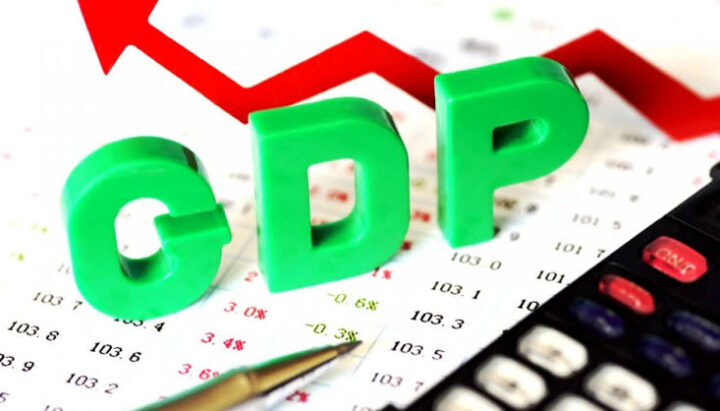The Centre for the Promotion of Private Enterprise (CPPE) has projected that Nigeria’s Gross Domestic Product (GDP) could climb to approximately $450 billion by the end of 2025, a significant economic milestone for Africa’s largest economy. The forecast, announced by CPPE’s Director, Dr. Muda Yusuf, follows the recent rebasing of the nation’s GDP and signals cautious optimism about the country’s economic direction amid ongoing structural reforms.
Dr. Yusuf, a seasoned economist, noted that the projection is based on the current pace of economic activity and the assumption that the macroeconomic environment will remain stable in the absence of major shocks. He emphasized that the revised economic figures provide a more realistic and contemporary view of Nigeria’s productive capacity, following the adoption of 2019 as the new base year for national accounts.

According to CPPE, the rebasing exercise revealed that Nigeria’s nominal GDP stood at ₦372.8 trillion in 2024, reflecting a significant leap from previous estimates. In the first quarter of 2025 alone, nominal GDP reached ₦94 trillion, with real GDP growing by 3.13%. This performance, though moderate, forms a strong foundation for a more robust economic performance in the remaining quarters of the year.
“The rebasing of GDP is a welcome development,” said Dr. Yusuf. “It gives a clearer picture of the economy, strengthens the credibility of our data, and aligns Nigeria with international statistical standards. Based on the trends so far and assuming steady progress in policy execution, we expect GDP to reach or exceed $450 billion by year-end.”
CPPE also pointed out that the rebasing has allowed for better evaluation of key economic indicators such as debt-to-GDP and tax-to-GDP ratios. This updated data, according to the think tank, will enhance policy formulation, economic planning, and investor confidence.
However, the organization cautioned that while the overall outlook is positive, certain sectors are lagging behind and require targeted support. Agriculture, for example, grew by only 0.7% in the first quarter, while manufacturing posted a growth of just 1.7%. These sectors, critical for employment and inclusive growth, continue to face structural challenges including insecurity, inadequate infrastructure, and poor access to finance.
“To achieve broad-based growth, we must address the weaknesses in agriculture and manufacturing,” Dr. Yusuf advised. “These sectors are too important to be allowed to stagnate. We need policies that stimulate investment, enhance productivity, and create jobs.”
CPPE also highlighted the persistent disconnect between sectoral GDP contributions and government revenue. The non-oil sector, despite accounting for a large portion of GDP, continues to yield comparatively little tax revenue due to informality and weak enforcement. The group recommended a comprehensive tax reform agenda aimed at expanding the tax base without increasing the tax burden on struggling businesses and individuals.
Dr. Yusuf stressed the importance of regular GDP rebasing, suggesting it should occur at intervals that reflect significant shifts in economic structure, technology, and consumption patterns. He further argued that outdated data misrepresents the economy and impairs policy effectiveness.
In its policy recommendations, CPPE called on the government to maintain macroeconomic stability, improve fiscal transparency, and ensure that reform gains are not reversed. The think tank urged authorities to strengthen institutions responsible for statistics, taxation, and investment promotion to better align public sector actions with private sector expectations.
It also emphasized that a $450 billion GDP is not merely a statistical achievement, but a foundation for better fiscal planning, debt management, and global credit perception. With accurate data, Nigeria can negotiate more favorable terms in international financing, attract long-term investors, and better target social and infrastructural development.
However, CPPE noted that its forecast is conditional. Major risks to achieving the $450 billion mark include volatility in global oil prices, inflationary pressures, security challenges, and policy uncertainty. Should any of these risks materialize, the projected figures could fall short.
The economic reform agenda—particularly the removal of fuel subsidies, exchange rate liberalization, and the push toward non-oil revenue diversification—has created both challenges and opportunities. While some sectors struggle to adapt to the changes, others, such as tech, finance, and logistics, are showing strong growth trajectories.
For Nigeria to sustain this upward trend, CPPE emphasized the need for coherence across fiscal, monetary, and trade policies. It called for strong collaboration between the federal government and subnational authorities to ensure policy alignment and efficient resource utilization.
As Nigeria aims to become a $1 trillion economy by 2030, the $450 billion projection for 2025 serves as a critical milestone on that path. If achieved, it would signify not only resilience in the face of past economic shocks but also growing capacity to compete globally.
In conclusion, CPPE’s projection offers a cautiously optimistic view of Nigeria’s economic potential. With disciplined policy execution, structural reform, and supportive governance, the economy may yet defy recent pessimism and chart a more sustainable path to prosperity.
Support InfoStride News' Credible Journalism: Only credible journalism can guarantee a fair, accountable and transparent society, including democracy and government. It involves a lot of efforts and money. We need your support. Click here to Donate
